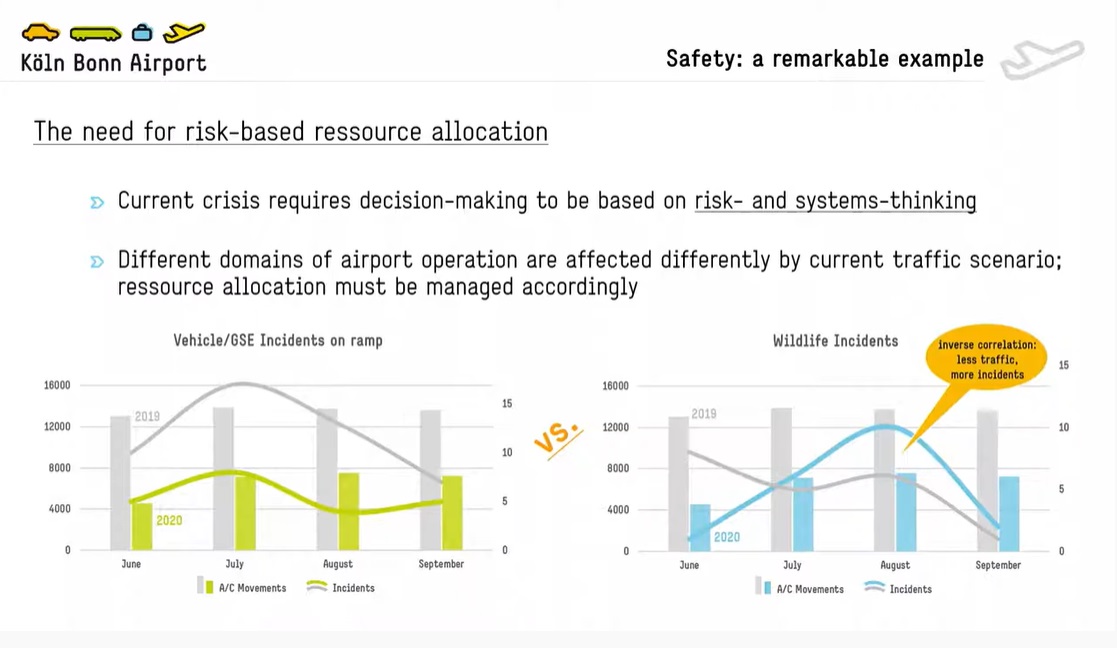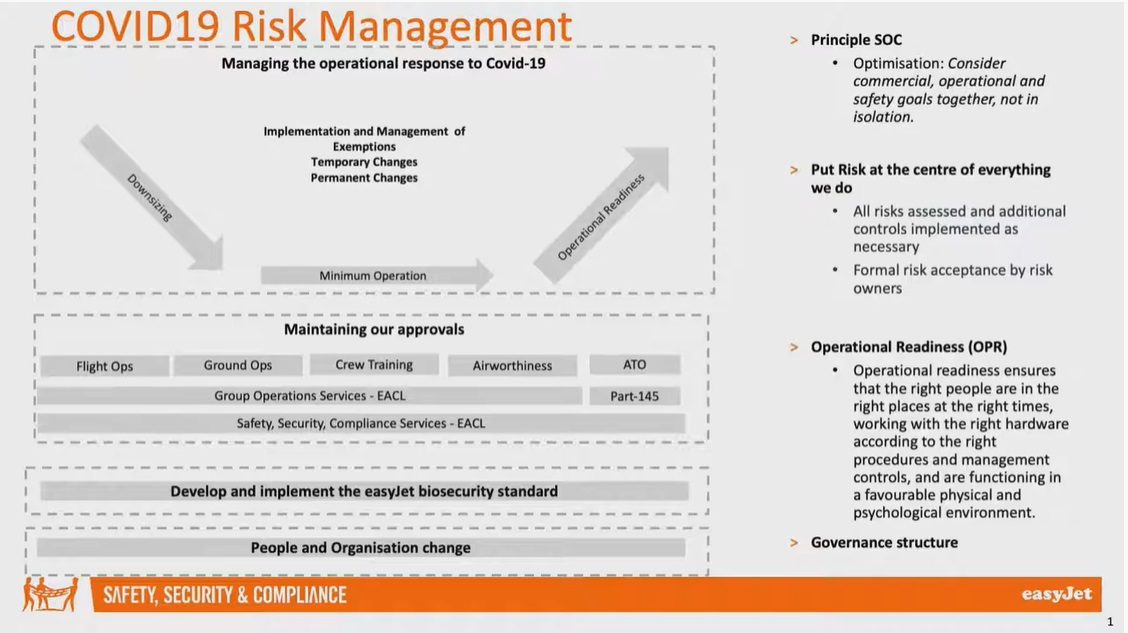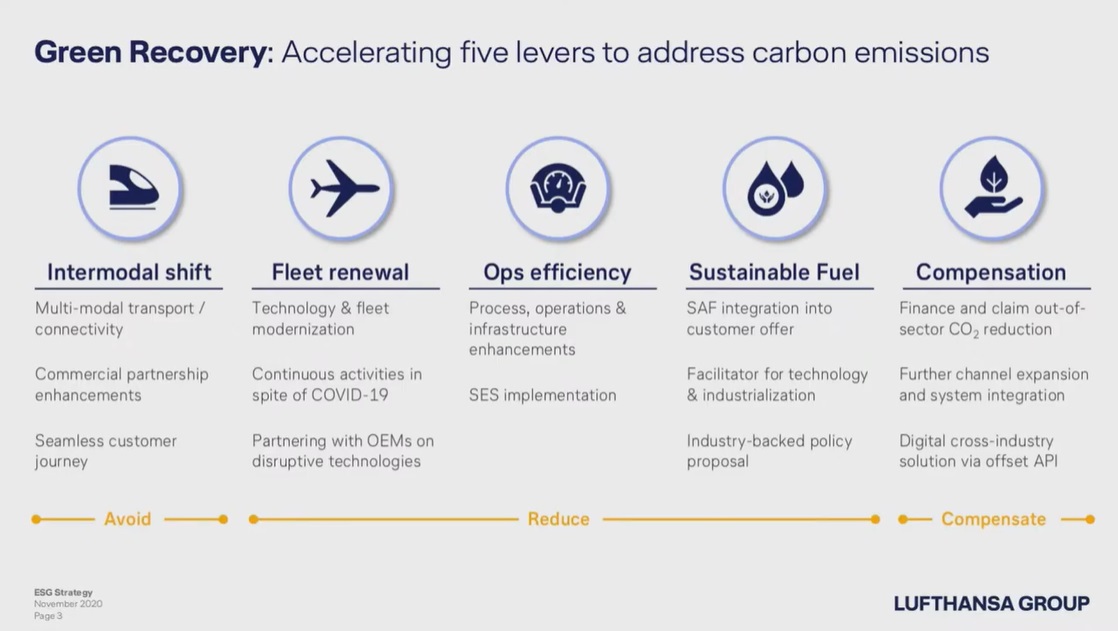4-5 November 2020 – Modern aviation has never seen a year like 2020. This year’s safety conference seek to bring our industry together to help the collective healing and recovery process amid COVID-19 pandemic. As a consequence, this year’s EASA’s conference had been held online.
Inxelo Technologies team participated online during 2-day conference last week and we aim to bring you a short summary of EASA Annual Safety Conference 2020.
In a keynote speech, Patrick Ky, Executive Director, EASA, highlighted EASA’s effort in protecting European industries as soon as COVID-19 emerged in China back in January by providing guidelines, recovery effort, return to normal operations project among other initiatives. They worked also on health safety protocol together with European Centre for Disease Prevention and Control (ECDC). Patrick said that the recovery is not going as planned due to resurgent restrictions around Europe that started last month but stressed that “we need to be vigilant now more than ever on aviation safety”.
Johann Friedrich Colsman, Director General of Civil Aviation, German Federal Ministry of Transport and Digital Infrastructure, in his keynote speech highlighted the importance of aviation industry for the global industries and that aviation recovery is one of the top priorities in order to successfully recover from COVID-19.
Johan Vanneste, President & CEO, Cologne Bonn Airport, presented about his airport in Cologne which had over 30 million passengers in 2019 while also being an important cargo airport (8th in Europe). Mr Vanneste gave two striking examples regarding safety. First they had to guarantee safety of its safety department but not having COVID-19 infections as that would jeopardize other staff who would have to go to self-isolation. The solution was to closed all safety departments so they are isolated of visits from outside world. The second example was an increase in wildlife around the airport due to lack of operations which caused an increase in number of incidents related to wildlife.
Mr Vanneste finished off with impressive huge awareness campaign for healthy travel that his airport is doing around the city and also demonstrated their new eco friendly construction – ice memory technology that acts like a giant refrigerator and helps them use their own technology to heat in winter and cool in summer their facilities.

An increase in wildlife at Cologne airport due to lack of traffic
Panel # 1: Operating Safely and Effectively – A Safe Return to Operations
In the first panel session, Erick Ferrandez, Head of Safety Intelligence, EASA in his speech showed the impact of the pandemic on the safety landscape. Now, the aviation eco-system has gone from stable to more fluid and uncertain eco-system, identification of new emerging risks (no or few data) and from before fighting complacency in a safe system now we have to ensure the focus remains on safety. EASA has done a tremendous work in ensuring the focus stays on safety such as COVID-19 Safety Risk Portfolio – identification of all new systematic risks.
Sophie Rougé, Head of Safety Governance & Corporate SMS, AIRBUS communicated challenging risks from Airbus point of view such as massive fleet grounding and return to service, supply chain disrupted due to COVID-19 and complacency remains still a risk.
Osman Saafan, Director Corporate Safety and Security management and Director Military Affairs , DFS who gave an view from ATM standpoint. Mr Saafan mentioned two horizons or two phases. First one is at the moment where air traffic comes in waves which demands additional risk management, downsizing and managing the interdependencies and preparing safely for the upcoming change as air traffic picks up. The second horizon is for the near future where the key are automation to move more quickly from air traffic control to air traffic management and increase system flexibility and resilience to react faster and safely on fluctuality in air traffic.
Jim Pegram, Director Safety, Security and Compliance, easyJet gave an insight into easyJet’s COVID-19 risk management.

easyJet COVID-19 Risk Management
To tackle COVID-19 emerging risks, easyJet developed strategies with SOC (Safety. Operational and Safety goals) principle. Principle SOC gives them the benefits of ensuring that safety conversation is taking place at the same time the operational and commercial conversation is going on and helps them to optimize and get the solution first time avoiding expensive iterations. With that in place, easyJet put the risk management at the center of everything they do. They developed the COVID-19 risk register with 130 items inside the register with taking SOC principle in consideration. They reassessed all risks as well as those in operations and commercial and put them forward to the risk owners who had to accept before the action is taken. They had all the risks presented and accepted before the restart of the operation. Inside Operational Readiness, easyJet merges their risks and management of change in one process so it ensures that everything is in place as planned.
Panel # 2: Welcoming Passengers – The Aviation Health Safety Protocol
John Franklin, Head of Safety Promotion, EASA moderated the second session how to combat the obstacles that stops passengers from flying. Luc Tytgat, Strategy and Safety Management Director, EASA, Josep M Jansa, Acting Head of Emergency Preparedness and Response Support, ECDC, Stanislav Bukhman, Head of Group Safety, Security and Compliance, Wizz Air and Ivan Bassato, Director Airport Management, Aeroporti di Roma joined Mr Franklin in this discussion. They concluded that its important to collaborate together with EASA in gaining back the trust of passengers. EASA highlighted its partnership with European Centre for Disease Prevention and Control (ECDC) on the aviation health safety protocol as a main project in implementing all the safety measures to tackle COVID-19 for the airports and airlines. Mr Bukhman pointed out that Wizz Air aircraft are clean and airports are implementing all the measures so the real issues lay in destination quarantine restrictions for passengers that want to travel. Wizz Air is confident that they will return to full capacity as soon as the restrictions are lifted.
Live Talk: Caring for our people through the crisis
Mr Franklin opened the second day of the conference with a special topic of caring about our people through this unpreceded crisis. The challenges the aviation industry is facing is putting untold pressure on the aviation workforce. Although there are difficult choices to be made, through compassionate leadership we can give our people the care they need to be a key asset in our recovery.
Mr Franklin mentioned that EASA is doing a huge work on raising awareness and providing resources for wellbeing of aviation staff. A lot of people have been furloughed due to COVID-19 and that some of aviation personnel are working jobs outside aviation. It is important to care for these people so they can return to their aviation jobs in the near future.
Panel # 3: Enhancing Environmental Sustainability – Recovering Greener
Simone Rauer, Head of Aviation Environmental Roadmap – Corporate Affairs, AIRBUS presented that the industry has taken this philosophy to acknowledge that 2050 is not a destination, but a marker on a path towards zero carbon emissions from air transport. With the benefits of new technologies such as emergence of unconventional airframes and a transition of the fleet towards hybrid/electric aircraft in the short-range and <100 seat category with entry into service from 2035/2040 together with better operations and infrastructures, the industry expects to hit the goal of net zero emissions for global aviation can be achieved to the horizon 2060.
Marc Houalla, Managing Director, Paris-Charles de Gaulle (CDG) Airport showed how Paris airport has a commitment to reach carbon neutrality by 2030. Additional goals by 2030 are electrification of ground handling equipment and vehicle fleet, implementation of geothermal energy sources, green house gas emission compensation, energetic performance of new terminal and purchase of renewable electricity. By 2050 commit to net zero carbon emissions from airport operations, airport changes according to noise and gas emissions, implementation of green aviation labels and study of implementation of the zero emission aircraft among others.
Dae-hee Lee, Head of Environmental Social Governance (ESG) Management, Lufthansa Group said that Lufthansa Group will be focusing shifting on new technology and modern aircraft to match their green objectives. They introduced the project “Green recovery” that aims to accelerate five levers to address carbon emissions.

Lufthansa Group Green Recovery
Marylin Bastin, Head of Aviation Sustainability, EUROCONTROL highlighted support of European aviation recovery in a sustainable way. EUROCONTROL has several projects to implement sustainability such as Collaborative Environmental Management, EUROCONTROL stakeholder forum, European CCO/CDO action plan etc.
Unveiling the Data4Safety Programme
In the final presentation of the conference, EASA unveiled its Data4Safety program. (also known as D4S). D4S is a data collection and analysis programme that will support the goal to ensure the highest common level of safety and environmental protection for the European aviation system.
The programme aims at collecting and gathering all data that may support the management of safety risks at European level. This includes safety reports (or occurrences), flight data (i.e. data generated by the aircraft via the Flight Data Recorders), surveillance data (air traffic data), weather data etc.







